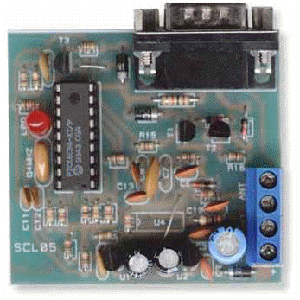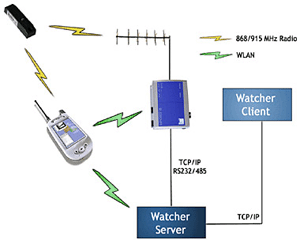Defense Department Tests Hybrid Active/Passive RFID
 There is more to radio-frequency identification than the passive RFID that retailers are looking to deploy. The U.S. Department of Defense, in fact, is testing both types—active and passive—in the same supply chain applications. And some expect that big retailers such as Wal-Mart and Target will ultimately add active RFID to their now emerging passive RFID deployments. There is more to radio-frequency identification than the passive RFID that retailers are looking to deploy. The U.S. Department of Defense, in fact, is testing both types—active and passive—in the same supply chain applications. And some expect that big retailers such as Wal-Mart and Target will ultimately add active RFID to their now emerging passive RFID deployments.
The Defense Department initially implemented active RFID for inventory control back in the early 1990s, after the first Persian Gulf War. Before that, military supply requisitions were placed either on paper or through EDI (electronic data interchange), often resulting in lost or incorrectly filled orders, said Bruce Jacquemard, executive vice president and general manager of global field operations for Savi Technology, a builder of RFID networks.
The Defense Department currently uses Savi's active RFID technology to track cargo shipments in 46 countries worldwide. Meanwhile, U.S. allies such as the United Kingdom and Denmark have started deploying Savi's products in their own supply chains, Jacquemard said in an interview.
Savi has also begun working with the Defense Department on new "hybrid" applications that combine active and passive RFID technologies, according to Jacquemard.
In the Defense Department tests, Savi is capturing information stored in passive RFID tags, attached to contents of shipping containers, and then integrating this data into RFID tags attached to the containers.
 How do these two wireless tracking technologies compare? Essentially, active and passive RFID both use RF (radio frequency) energy for communicating between a tag and a reader device, or scanner. But the methods for powering the tags are not the same. Active RFID uses a battery within the tag; passive RFID depends on RF energy transferred from the reader to power the tag. How do these two wireless tracking technologies compare? Essentially, active and passive RFID both use RF (radio frequency) energy for communicating between a tag and a reader device, or scanner. But the methods for powering the tags are not the same. Active RFID uses a battery within the tag; passive RFID depends on RF energy transferred from the reader to power the tag.
Although active RFID is more expensive than passive RFID, it's a technology that allows RFID tags to be continuously powered, and to generate high-level signals back to the reader, even with only low-level signals from the tag, advocates say.
These distinctions translate into differences in communications range, the ability to collect information from multiple tags, functionality in metallic and wet environments, and opportunities to integrate with other sensor technologies.
"Generally speaking, passive RFID can only transmit over a range of about 300 feet," said Allan Griebenow, CEO of Axcess International Inc., an RFID systems provider.
In a recent test, the Defense Department compared Axcess International's active RFID against two varieties of passive RFID—operating at high and ultra high frequencies—for visitor tracking, disaster management and access control to high security areas.
RFID tags were integrated into ID badges that were worn in a variety of configurations: in a wallet, in a computer bag, and hanging as a pendant from a chain necklace, for instance.
According to Griebenow, the active ID cards performed much better in a number of situations: when the employee passed through the center of a doorway; when the card was held against the body; and when multiple tags needed to be read simultaneously, for example.
On a related note, Axcess recently announced the integration of its active RFID technology with both ammonia sensors, for detecting gas leaks, and radiological sensors.
Other government users of Axcess' active RFID include the U.S. Marines in Guam; the U.S. Navy in Hawaii; and the U.S. Immigration Services, Griebenow told eWEEK.com.
Other applications are already integrating both types of RFID, according to Griebenow. In truck shipments, for example, drivers sometimes wear active ID cards, whereas passive RFID is used to identify the contents of the load, he said.
Some day, large retailers such as Wal-Mart and Target might also adopt hybrid active/passive RFID applications, he said.
"I predict that some of the higher-level palettes and cartons will ultimately be tagged with active RFID," Griebenow said.
Beyond homeland defense, Axcess also plays in the supply chain, sensing and wireless security spaces.
Article From: http://www.eweek.com/article2/0,1759,1746423,00.asp
Related: More news about RFID

|
